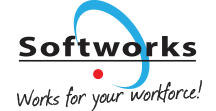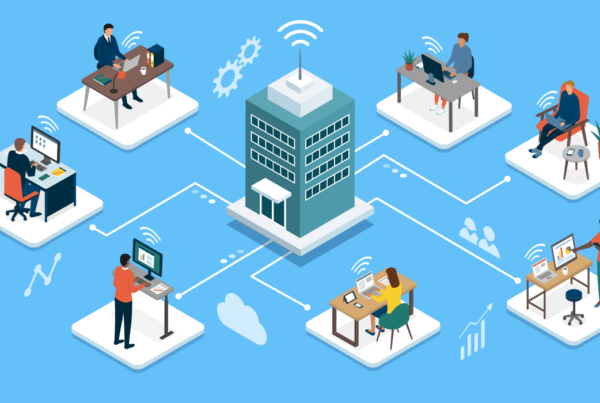Employees are not staying with companies as long as they used to. In the Department of Labor’s 2024 study on workplace tenure states that the average number of time employees stay in a company has fallen from an average of 4.1 years to 3.9 years. This is a problem for companies because not only does it create significant gaps in operations but also more money is being spent on recruiting for these roles. Both huge cost centres in an organization. That’s why employee experience has moved to the forefront of HR and business strategies. It’s a very simple formula – a+b=c or rather happy employees (a) + workplaces that understand their needs (b) = Longer retention of employees ©. Companies increasingly recognize that a positive employee experience isn’t just a “nice-to-have” – it’s a critical driver. Workforce Management (WFM) plays is vital in shaping this experience. By providing the tools and processes that allow employees to feel valued, supported, and empowered in their roles, Organizations are rubber-stamping their employee loyalty.
This blog explores how WorkForce Management can significantly elevate the employee experience, from personalized scheduling to work-life balance, and why this matters for the success of both employees and organizations.
1. Flexible and Transparent Scheduling
Employee scheduling is often one of the most sensitive aspects of workforce management. Rigid, unpredictable, or mismatched schedules can quickly lead to frustration, burnout and disengagement. This is especially true for sectors such as Healthcare and Manufacturing, with Healthcare tenures having fallen to 2.8 years post pandemic. Workforce Management software improves this because it allows the creation of flexible and transparent schedules that respect employees’ needs and preferences, all while maintaining business efficiency.
Organizations should look for a Workforce Management System that can allow employees to state shift preferences on their profile and then automatically take that into account when creating schedules. It’s one thing to ask for preferences but another thing entirely to act upon them. A well-implemented WFM solution provides employees with visibility into their schedules and the opportunity to request changes or swap shifts as needed. By enabling this level of control, WFM software supports a fairer, more balanced work experience. Employees feel empowered when they have a say in their working hours, which enhances their satisfaction and reduces absenteeism.
2. Supporting Work-Life Balance
Achieving work-life balance is a top priority for employees today. When employees are stretched too thin or frequently required to work overtime, it takes a toll on both their mental and physical health (not to mention could possible be in violation of working time laws). Workforce Management software helps prevent this by automating scheduling to ensure optimal staffing levels without overburdening individual employees.
WFM solutions analyze workload demands and skill requirements, allowing managers to distribute tasks more effectively. This enables employees to be more productive during their scheduled hours while also having the necessary time off to recharge. Ultimately, a balanced approach to scheduling leads to a happier, healthier, and more motivated workforce. A happy workforce is your greatest asset no matter what industry you are in.
3. Seamless Access to Information Through Self-Service
A positive employee experience often hinges on ease of access to essential information, from payroll and attendance records to leave balances. WFM software with self-service portals gives employees 24/7 access to this information on their own devices, empowering them to manage personal administrative tasks independently.
Through a self-service app, employees can quickly check their schedules, log hours, request leave, and manage shift swaps, all without needing to rely on HR or management. This not only improves employee satisfaction by reducing frustration but also frees up HR to focus on strategic initiatives that directly benefit the workforce.
4. Ensuring Fairness and Transparency
Transparency and fairness are essential components of a positive work environment. Workforce Management software helps establish both by standardizing processes such as attendance tracking, performance metrics, and scheduling. With clear, unbiased data on employee performance, hours worked, and scheduling preferences, employees are assured of a level playing field where they are recognized based on merit.
Transparency in processes also minimizes misunderstandings or perceived favoritism, promoting a culture of trust within the organization. Employees who feel they are treated fairly are more likely to be engaged, productive, and loyal.
5. Career Development and Skills Tracking
WFM software goes beyond scheduling by offering features that support skills tracking and career development. Employees want to grow in their roles, and WFM tools can help them and their managers track progress, set goals, and identify opportunities for training or advancement.
This visibility into skill gaps and training needs allows for a proactive approach to employee development, ensuring that employees feel supported in their professional growth. By aligning personal career goals with organizational needs, WFM fosters an environment where employees can see a future for themselves within the company.
6. Reducing Stress and Boosting Engagement
Burnout is a significant issue across industries, often stemming from unmanaged workloads, inconsistent schedules, and poor communication. WFM software addresses these issues by providing real-time data on staffing levels, attendance, and productivity. Managers can identify and address potential stressors before they escalate, creating a more supportive environment.
With automated alerts and reminders, WFM also ensures that employees are not over-scheduled or stretched too thin. This proactive approach not only reduces stress but also boosts engagement as employees feel their well-being is a priority.
7. Supporting Remote and Hybrid Work
The workplace landscape has changed dramatically, with many organizations now supporting remote and hybrid work models. WFM software allows these models to function smoothly, providing tools that accommodate flexible working arrangements. Remote employees can access scheduling, track time, and interact with HR as seamlessly as if they were in the office, fostering an inclusive culture that values all employees, regardless of location.
Workforce Management as a Strategic Employee Experience Tool
At its core, Workforce Management software is a tool designed to align employee needs with business goals. By investing in a robust WFM solution, companies can improve scheduling efficiency, support work-life balance, and enhance transparency, all of which contribute to a more positive and fulfilling employee experience.
As employee expectations continue to evolve, WFM provides the foundation for a workplace where employees feel empowered, engaged, and motivated. In today’s fast-paced world, organizations that prioritize employee experience will ultimately drive higher performance and retain top talent—making WFM software a wise investment for the future.










Great article! I found the insights on personalized scheduling really useful. It’s fascinating how effective workforce management can boost employee satisfaction and productivity. Looking forward to implementing some of these strategies at work!